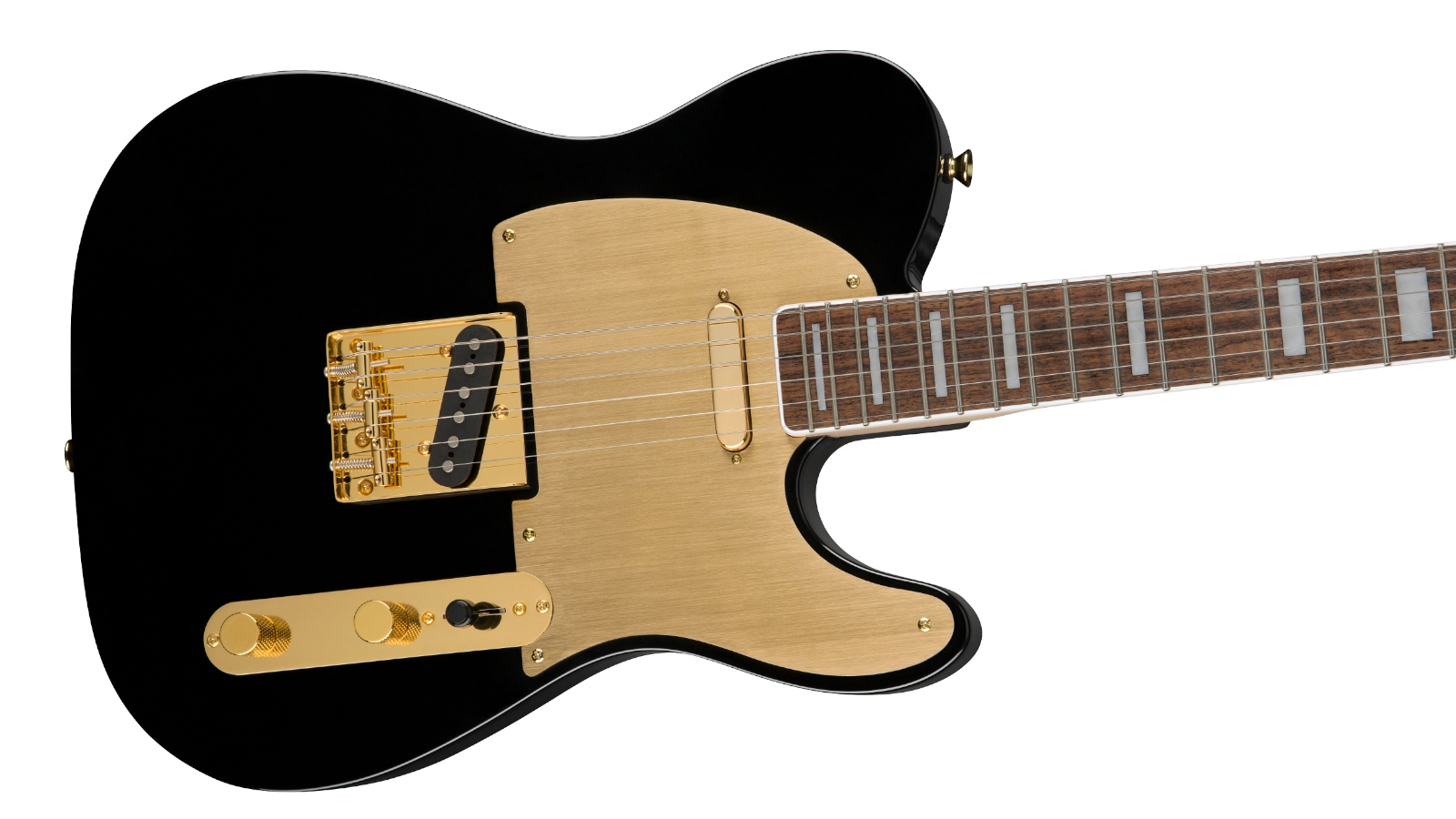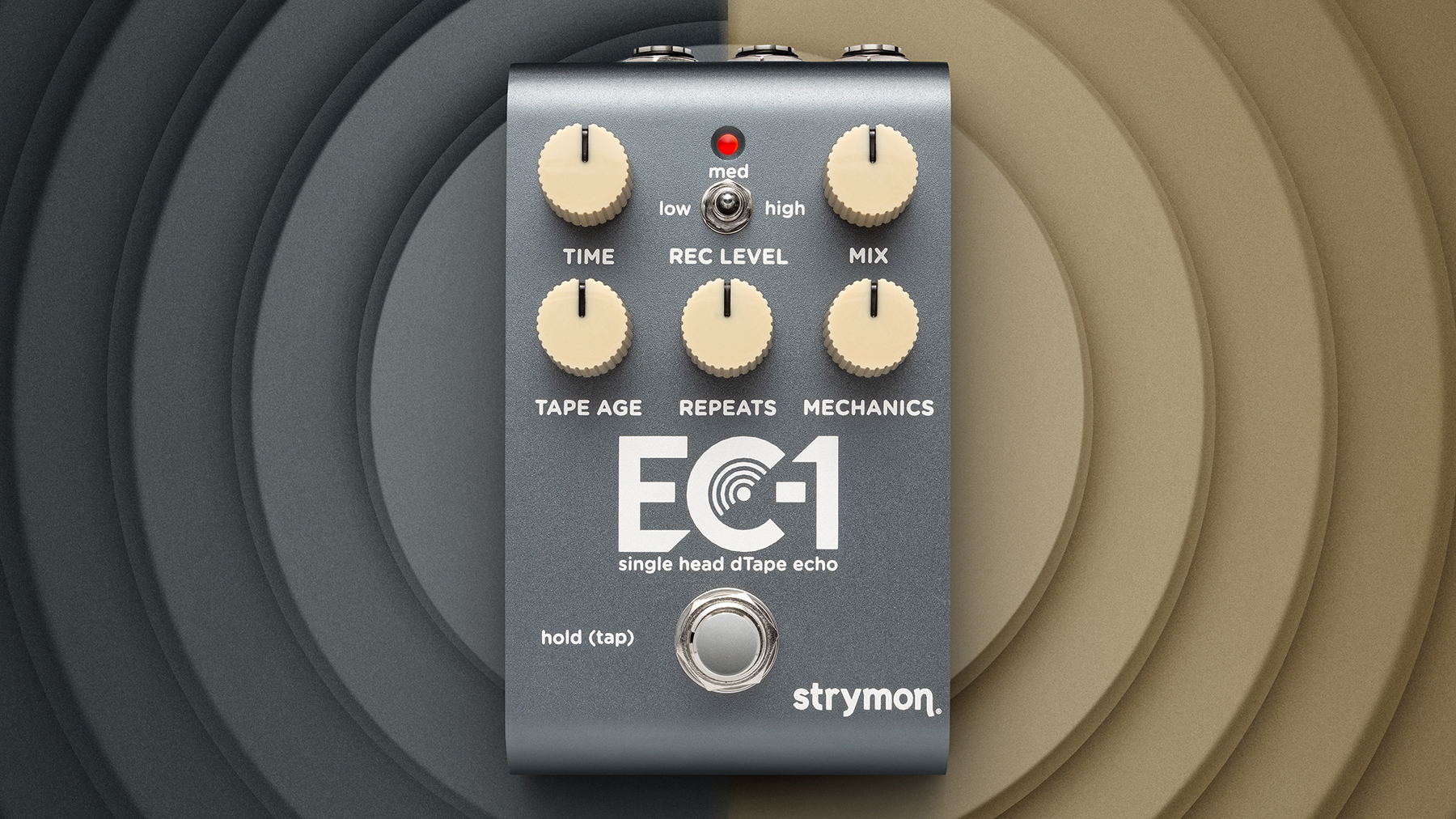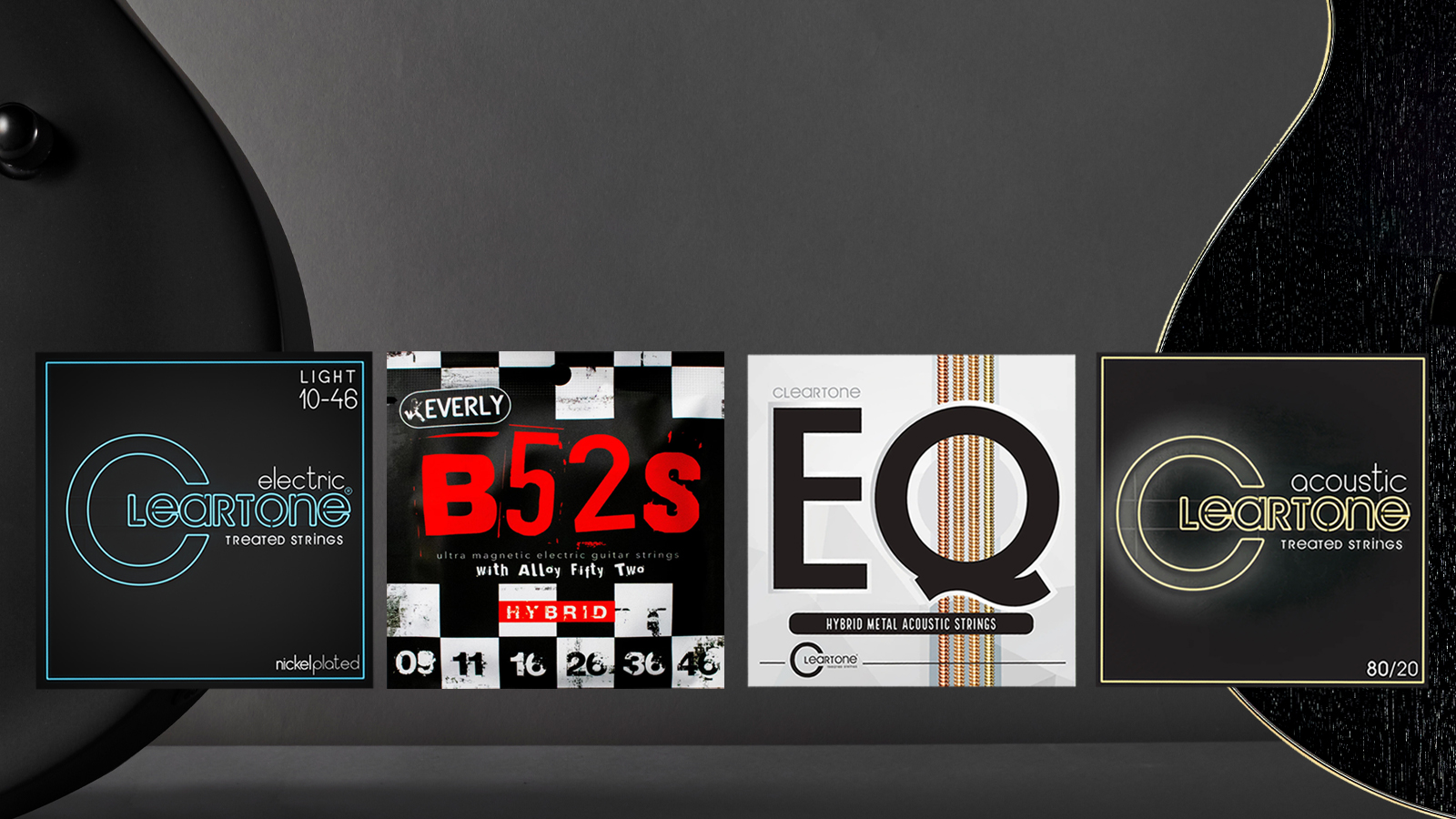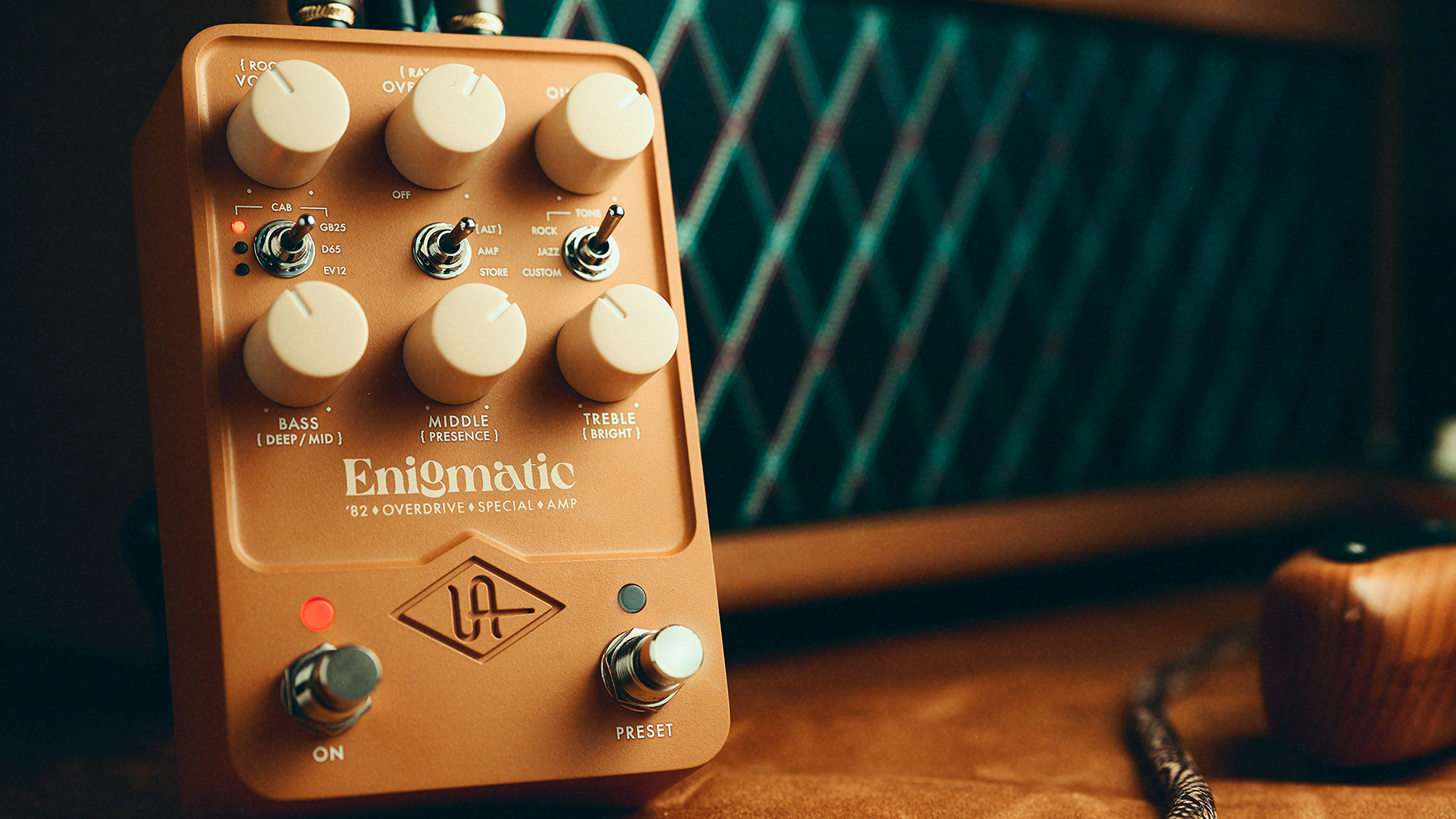GuitarPlayer Verdict
Delivers a lot of bang-for-the-buck, and it’s a cool choice for those seeking a gigging guitar with a swanky, uptown look.
Pros
- +
Affordable
- +
Good sounding
- +
Sharp looking
Cons
- -
No case or gig bag
You can trust Guitar Player.
Forty years ago, Fender launched the Squier series of offshore-made versions of Stratocasters, Telecasters and Jazz and Precision basses, which quickly became popular with players for their affordability, playability and tone.
In celebration of this chapter in guitar-making history, the 40th Anniversary Gold Edition Telecaster, Stratocaster, Telecaster and Jazzmaster are offered as blinged-out versions of these classics that feature gold hardware, neck binding and a variety of available color finishes.
The Gold Edition Tele on review here looks sharp with its gloss-black finish (also available in Sherwood Green Metallic) and preponderance of gold-plated parts, including the bridge and its three saddles, tuners, front-pickup cover, knurled knobs and control plate, strap buttons and engraved neck plate.

Even the pickguard is brushed gold anodized-aluminum. It all made a feast for the eyes as we lifted this guitar from the cardboard box it shipped in.
Unfortunately, no gig bag is provided, so don’t forget order one if you decide to pull the trigger on one of these budget beauties.
A little more disappointing was the setup on our review sample, which on arrival had unplayably low action and lots of pinging in the nut slots.
This guitar looked to be fresh off the boat, and I’m guessing that most stores would give their incoming stock some attention before putting guitars on the showroom floor or sending them to online purchasers.

At any rate, after adjusting the truss-rod (easy enough to do since it’s accessible from the headstock) and making a few other tweaks, the guitar was soon play-worthy and the intonation acceptably tuneful.
Fender sent a replacement Tele (in Sherwood Green Metallic) that had been properly set up, so I’m assuming this is how they are supposed to be sent out and the one we initially received had somehow gotten by the setup crew.
The small bone nut could use some more smoothing on the corners and the pickup selector doesn’t feel quite as solid as a standard Tele’s, but these are acceptable compromises to keep the price down.
As such, and all things considered, the playing feel is quite good, thanks to the neck’s comfy C-shape and the slender Narrow Tall frets. which are decently crowned and their tips smoothed where they meet the white binding – and no complaints there, as the binding is carefully done.

The large pearloid inlays also stand out nicely on the dark Indian-laurel fretboard, and only a tiny amount of black filler is visible around them.
The 40th Anniversary Telecaster has a springy acoustic tone, with nice sustain, and it sounded cool played though a Fender Deluxe Reverb, a Victoria Double Deluxe 2x12 combo and a variety of overdrive pedals.
The Alnico-magnet pickups are a wise choice because they’re clear, balanced and have abundant output.
The bridge unit has the fat, spanky bite you need from a Tele, but it’s still sweet on top, and you can mellow things out for smooth distortion via the tone control, although the sound becomes muddy if you go too far.

As usual for the breed, the neck pickup is hardly the star of the show. It gets the job done when a rounder tone is needed, but it’s best in combination with the bridge pickup, where you can appreciate the glassy rhythm textures and twangy lead tones that respond very nicely to volume changes.
The volume pot also doesn’t shave off treble when it’s turned down.
All said, the Squier 40th Anniversary Telecaster, Gold Edition has a lot to offer in this price range. It looks sharp as hell, it plays well, and it sounds good for anything you’d want to aim a Tele at.

At under six bills, it delivers a lot of bang-for-the-buck, and it’s a cool choice for those seeking a gigging guitar with a swanky, uptown look.
This model and its Gold Edition siblings are fitting tributes to a line of guitars and basses that were well received back in 1982 for being able to go toe-to-toe with some of Fender’s USA production models of the time.
It’s a different scene today, but with prices of just about everything going up, anyone looking to stretch their guitar-buying bucks will find these and other new Squier models worth checking out.
Specifications:
- BUILT: Indonesia
- NUT: Bone, 1.650” wide
- NECK: Maple C shape, gloss finish
- FRETBOARD: Indian Laurel, 25.5” scale, 9.5” radius, pearloid block inlays
- FRETS: 21 narrow tall
- TUNERS: Vintage
- BODY: Nyatoh
- BRIDGE: 3-saddle strings-through-body Tele
- PICKUPS: Fender designed Alnico single-coils
- CONTROLS: Volume, tone 3-way selector
- EXTRAS: Gold anodized aluminum pickguard. Gold-plated hardware. Fingerboard binding
- FACTORY STRINGS: Fender Nickel Plated Steel .009–.042
- WEIGHT: 6.98 lbs (as tested)
Visit Fender for more information.

Art Thompson is Senior Editor of Guitar Player magazine. He has authored stories with numerous guitar greats including B.B. King, Prince and Scotty Moore and interviewed gear innovators such as Paul Reed Smith, Randall Smith and Gary Kramer. He also wrote the first book on vintage effects pedals, Stompbox. Art's busy performance schedule with three stylistically diverse groups provides ample opportunity to test-drive new guitars, amps and effects, many of which are featured in the pages of GP.
Guitar Center's Guitar-A-Thon is back, and it includes a colossal $600 off a Gibson Les Paul, $180 off a Fender Strat, and a slew of new exclusive models
"We tried every guitar for weeks, and nothing would fit. And then, one day, we pulled this out." Mike Campbell on his "Red Dog" Telecaster, the guitar behind Tom Petty & the Heartbreakers' "Refugee" and the focus of two new Fender tribute models











